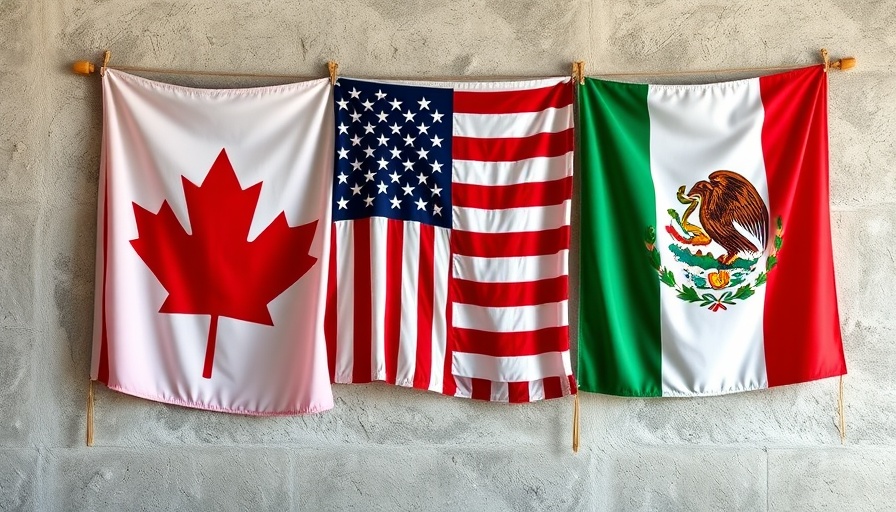
Understanding the Impact of Trump's Tariffs on Mexican Industries
On March 4, 2025, the United States government implemented a sweeping 25% tariff on imports from Mexico and Canada, driven by President Donald Trump's desire to curb immigration and ensure fair trade. This aggressive move comes at a time when Mexico and Canada rank as America’s largest trading partners, with their markets representing over $1.6 trillion in goods traded. As experts warn, this could spark a full-blown trade war, destabilizing key sectors of the Mexican economy.
Heavy Economic Toll on Families and the Market
From the outset, Mexican officials, including Marcelo Ebrard, Minister of Economy, have warned that these tariffs could impose a staggering cost of approximately $20.5 billion on American families, contributing to increased inflation on crucial goods like vehicles, electronics, and agricultural products. For marketing managers, understanding this ripple effect is vital not just for pricing strategies but also for audience targeting.
Automotive Industry: The Biggest Casualty?
The automotive sector, essential to Mexico's economy, is expected to bear the brunt of these tariffs. Accounting for about 46% of Mexican exports, this industry is integrated deeply within the North American trade framework. A staggering 75% of Mexican automotive exports are directed towards the U.S. market. The tariffs threaten to disrupt this balance, with forecasts indicating that assemblers in Mexico may cut production by as much as one million units per year, which would drastically reduce retail availability and inflate consumer prices.
Contrasting Insights: Regional Impact and Broader Implications
Experts at the National Auto Parts Industry highlight how threats to production can destabilize not only jobs within Mexico but also impact the overall supply chain across North America. The interdependence of U.S. and Mexican auto industries means that increased tariffs on Mexican auto parts could lead to higher car prices in the U.S., estimated to rise by around $3,000, complicating affordability for American consumers.
Potential Retaliatory Measures: The Domino Effect
Historically, tariffs have spawned cycles of retaliation. For instance, during previous tariff regimes, countries targeted U.S. agricultural exports, notably soybeans and corn, which hit American farmers hard. With Mexican imports representing significant portions of American agriculture, retaliatory tariffs could disrupt farm incomes and create an additional layer of difficulty for marketing managers seeking to navigate a shifting economic landscape.
Future Predictions: Adaptation and Strategy Required
The evolving relationship between these three countries calls for agile marketing strategies to mitigate risks associated with these tariffs. Understanding the tariff landscape can guide marketers not only in planning but also in strategic positioning. As consumers brace for inflationary pressures on goods ranging from home appliances to fruits, brands must adapt their messages to emphasize value and quality.
Conclusion: Stay Informed, Stay Ahead
The repercussions associated with these tariffs are significant - affecting costs, trade relationships, and ultimately, consumer behaviors. Marketing managers need to stay abreast of these developments to navigate this challenging environment. Ensuring awareness of tariff impacts on both pricing and purchasing power can help shape effective market strategies in the face of economic changes across North America.
 Add Row
Add Row  Add
Add 




 Add Row
Add Row  Add
Add 

Write A Comment